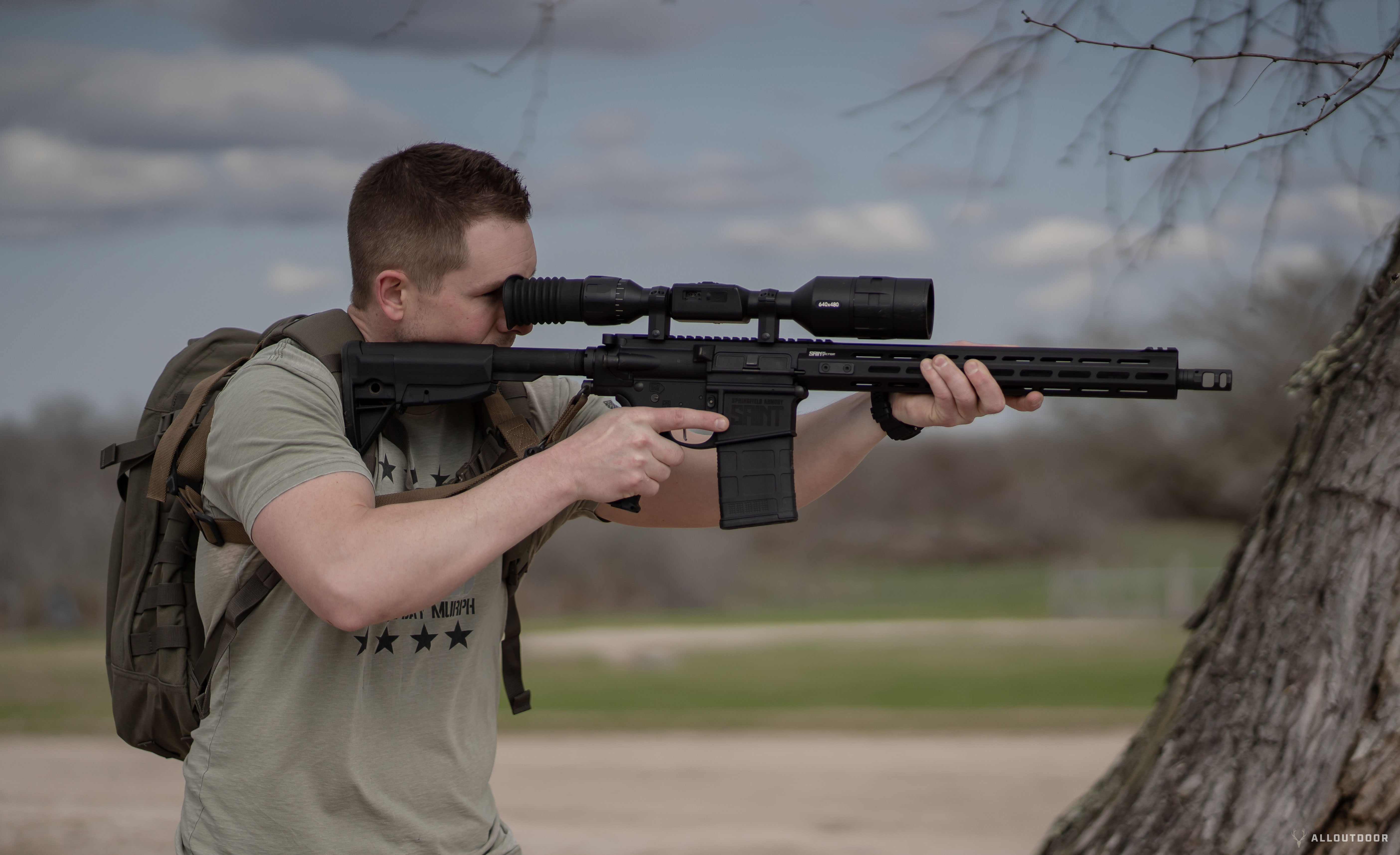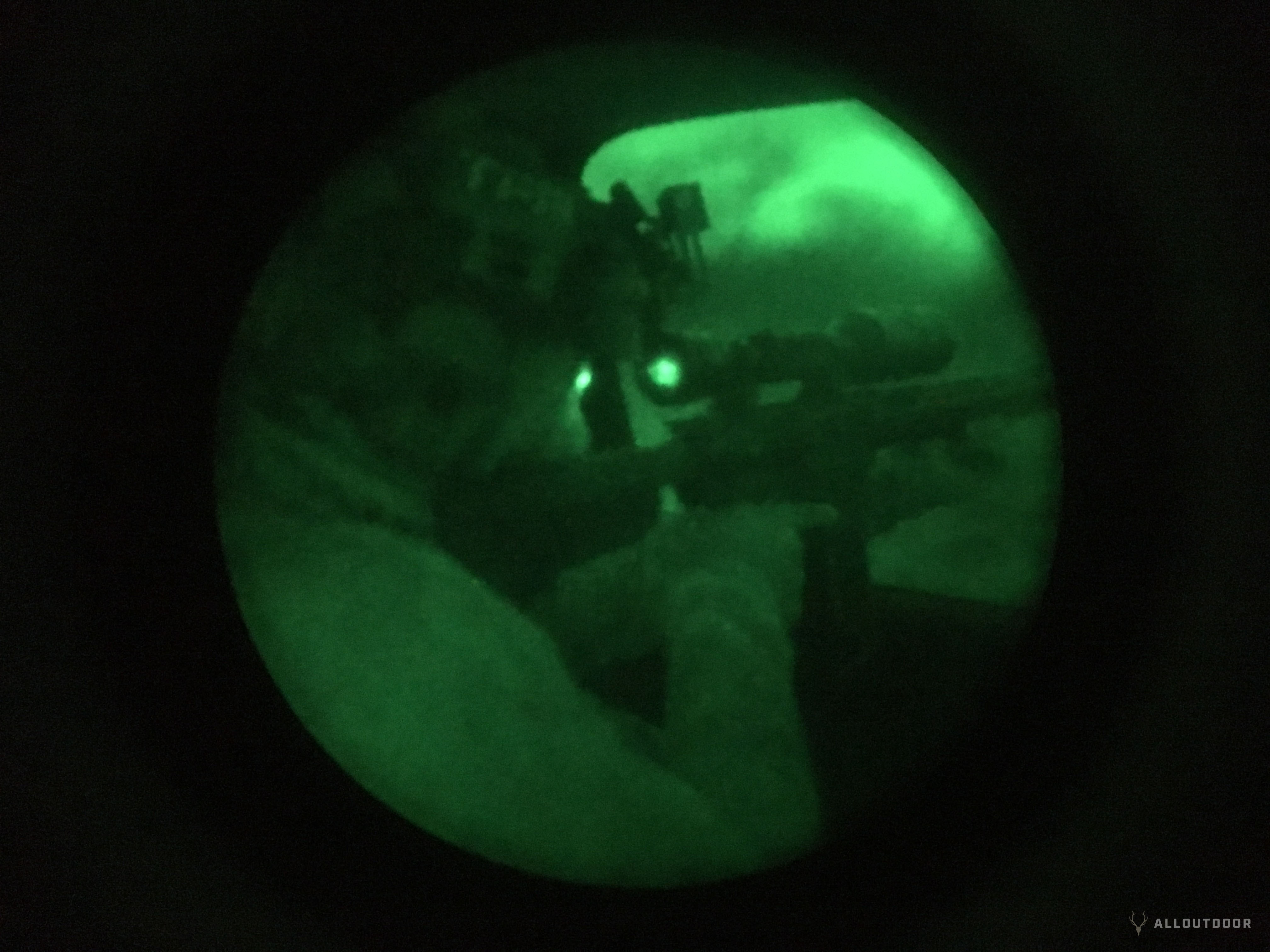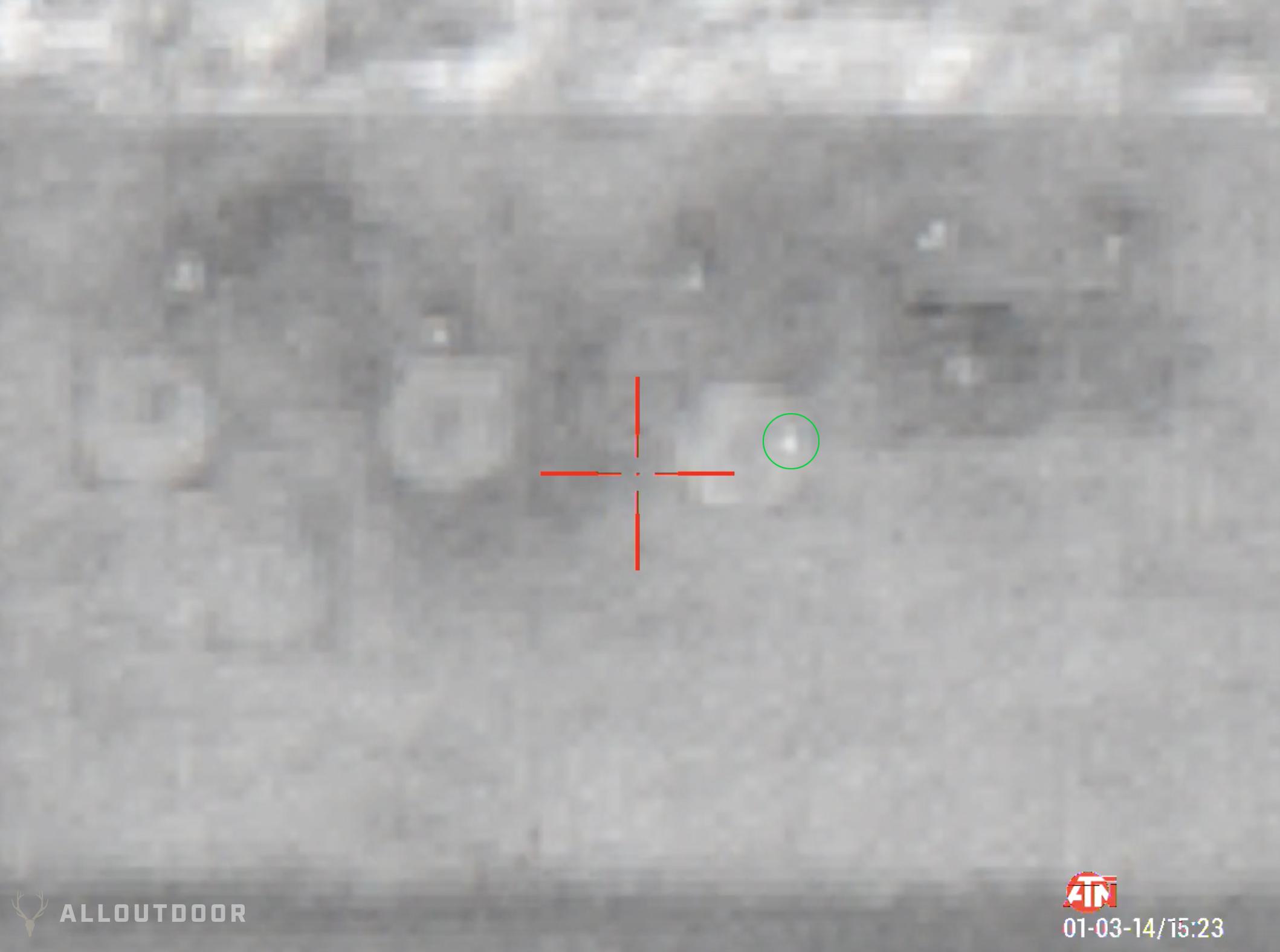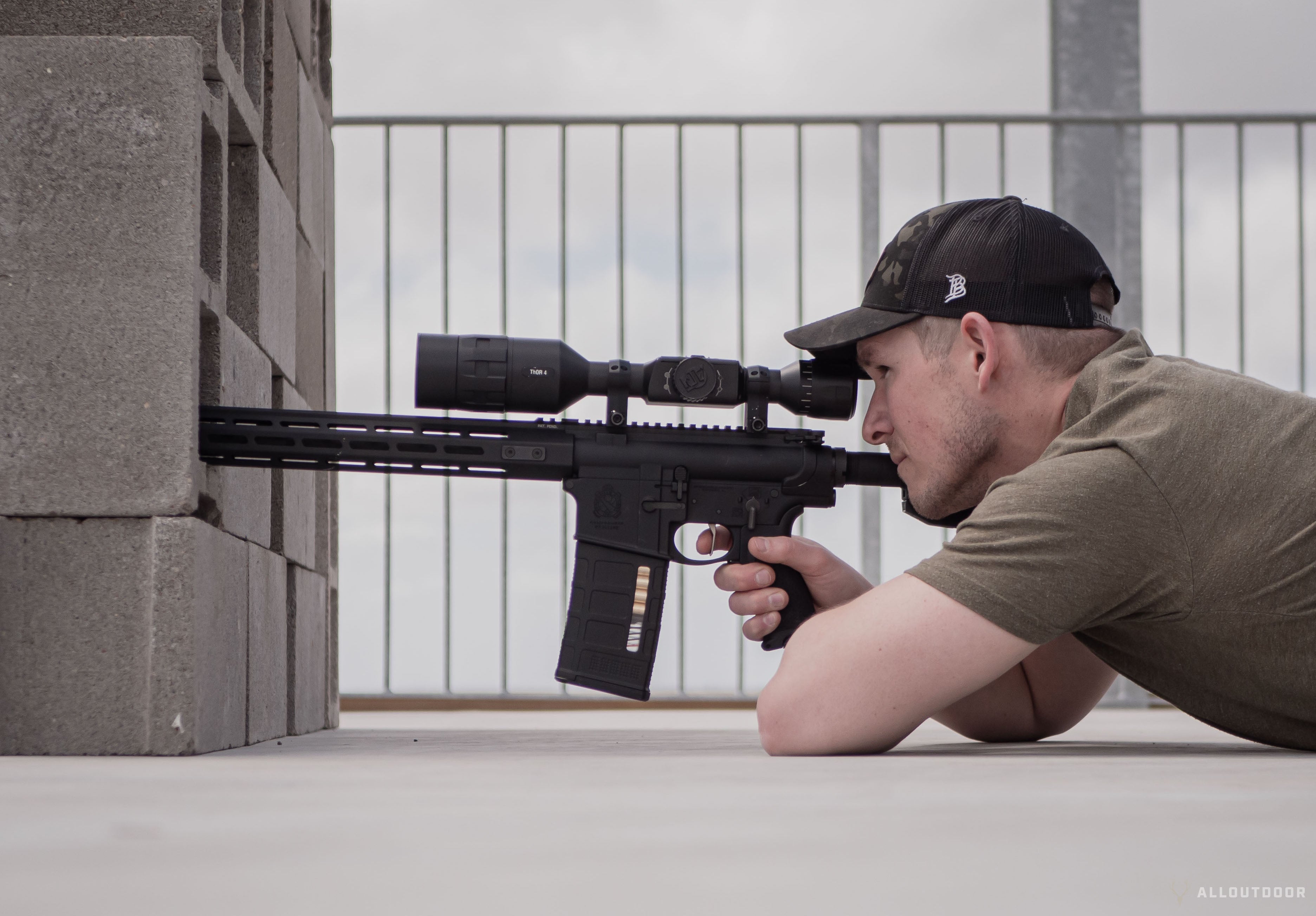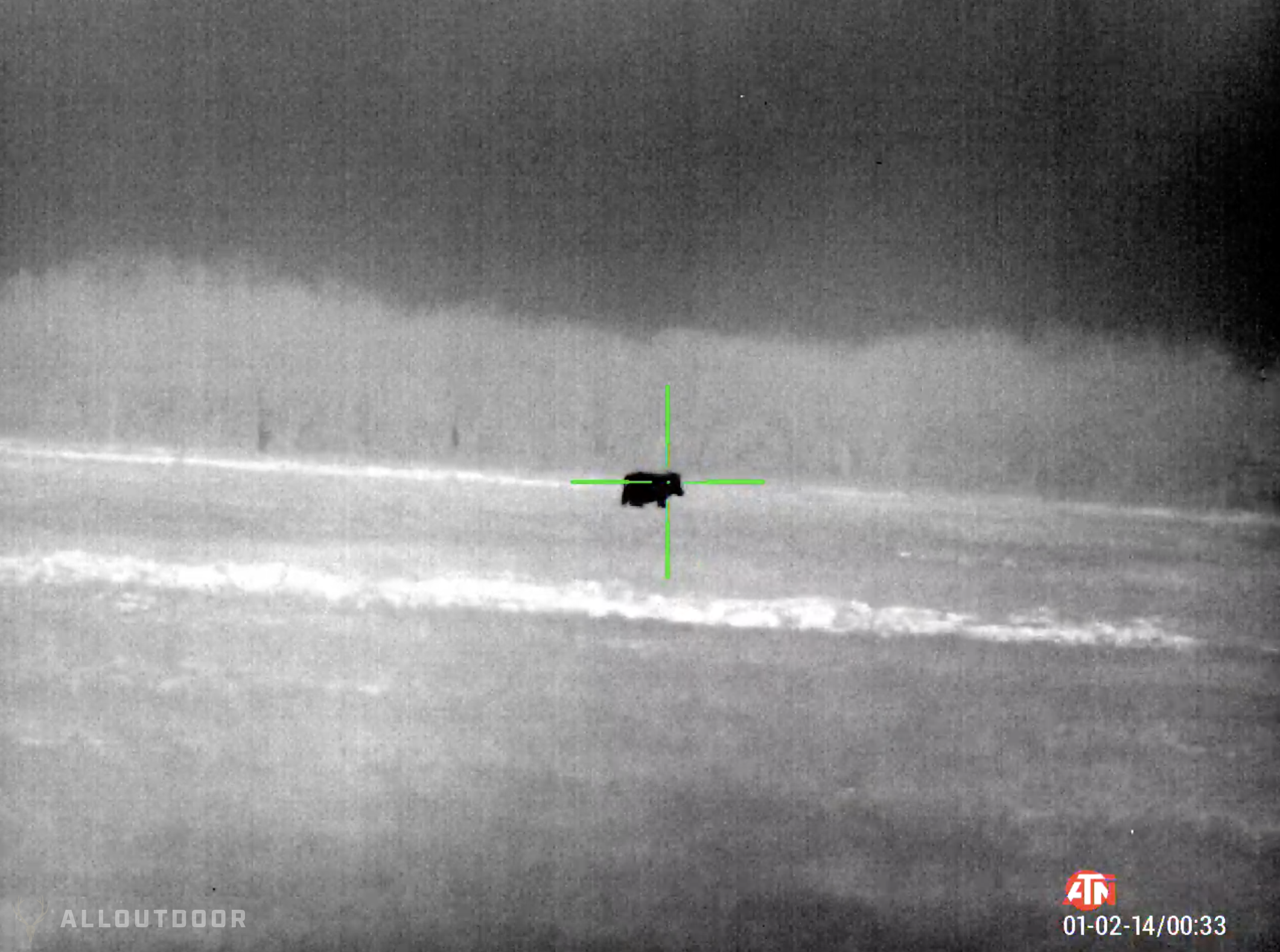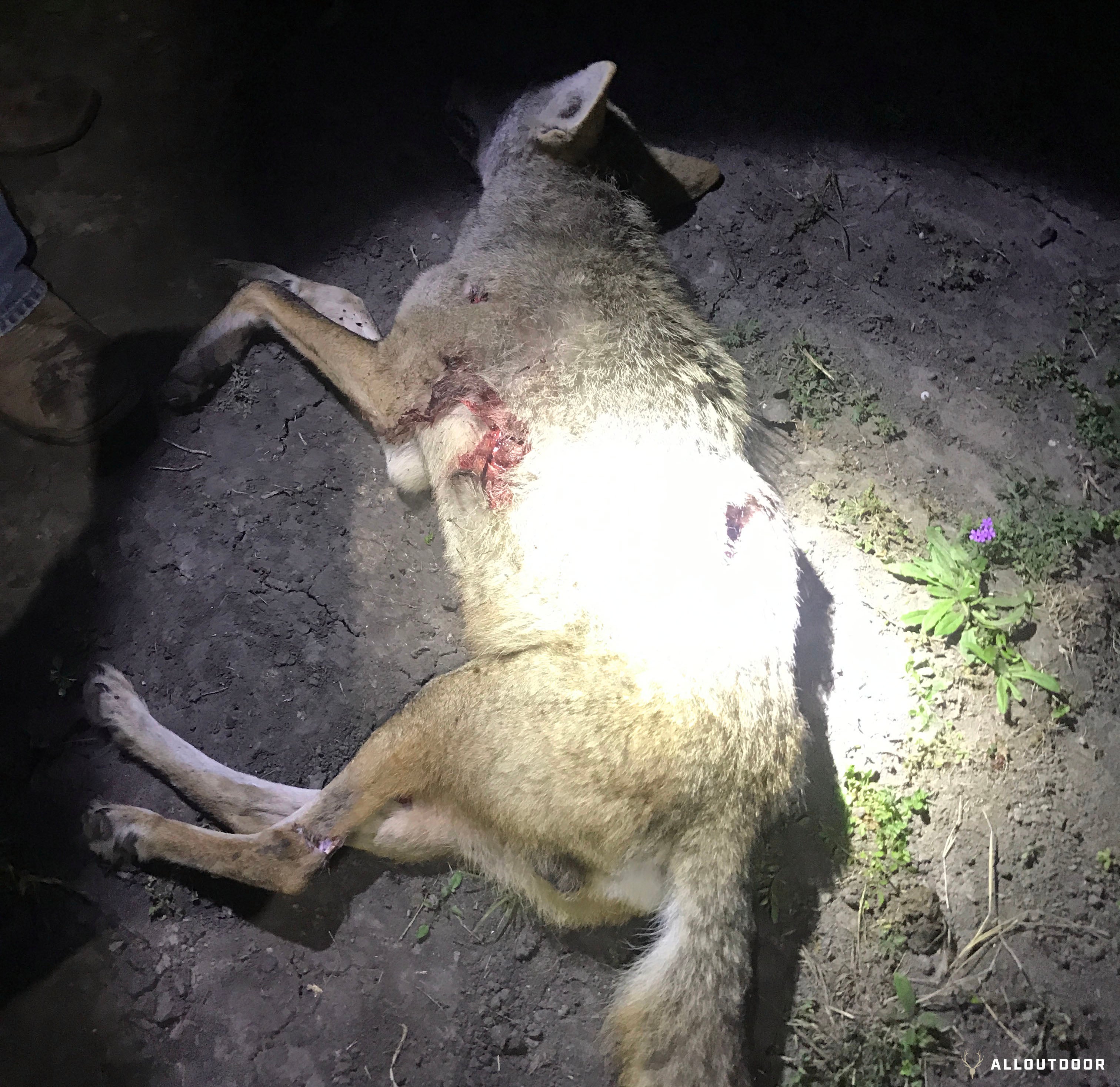ATN Thermal/Night Vision Wild Hog & Coyote Hunt
Nicholas Chen 03.26.21

In the second week of March, Adam and I went on an ATN Thermal hunt for hogs and coyotes down in South Texas. This was my first real hunt for anything crawling on the ground. I have hunted doves with my father when I was a kid. I have since shot a lot of USPSA and big 3-Gun matches, but never hunted a living animal before this. There have been a couple impromptu pest eradication events, but nothing ever came out of them as the animals never showed up. I suppose shooting airsoft at other players sort of counts as hunting? But not really applicable here. While Adam is well versed and experienced in hunting, I am just as much so with using thermal and night vision technology. This is my jam.
Using ATN Thermal To Hunt
For those of you who have never used a thermal device before, there are some basic things to know about them. Thermal devices are generally measured by how far they can sense a thermal signature. Detection, Recognition and Identification is all dependent on distance.
- Detection is the furthest distance a thermal device can detect a thermal signature of a given size. Usually people or animals.
- Recognition is the distance at which you can tell you are looking at an animal and not a blob on the screen. This is going to be closer than the Detection range.
- Identification is the distance at which you can positively identify that the animal is a hog and not a deer or cow. This is the closest distance measured for thermal devices.
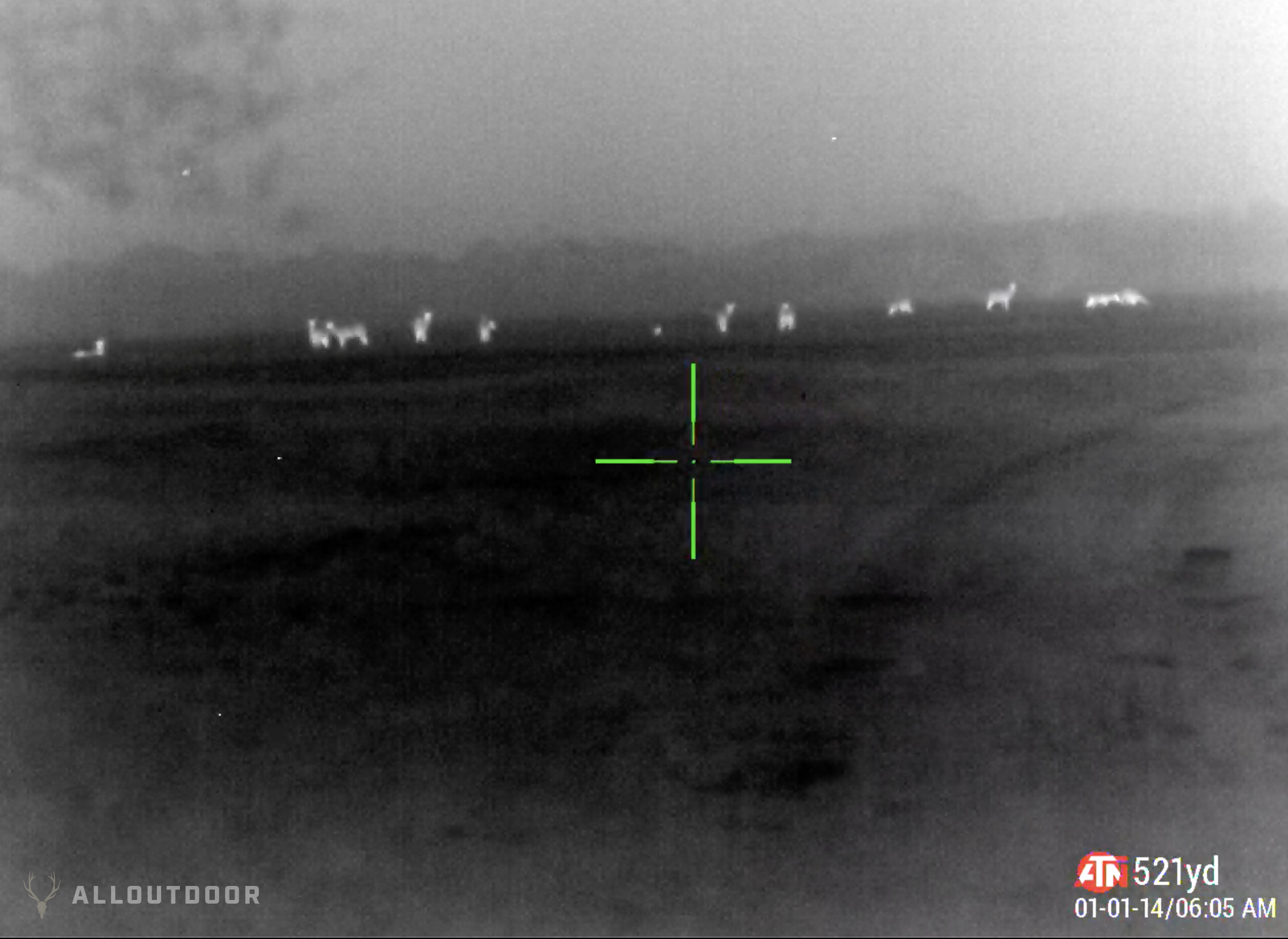
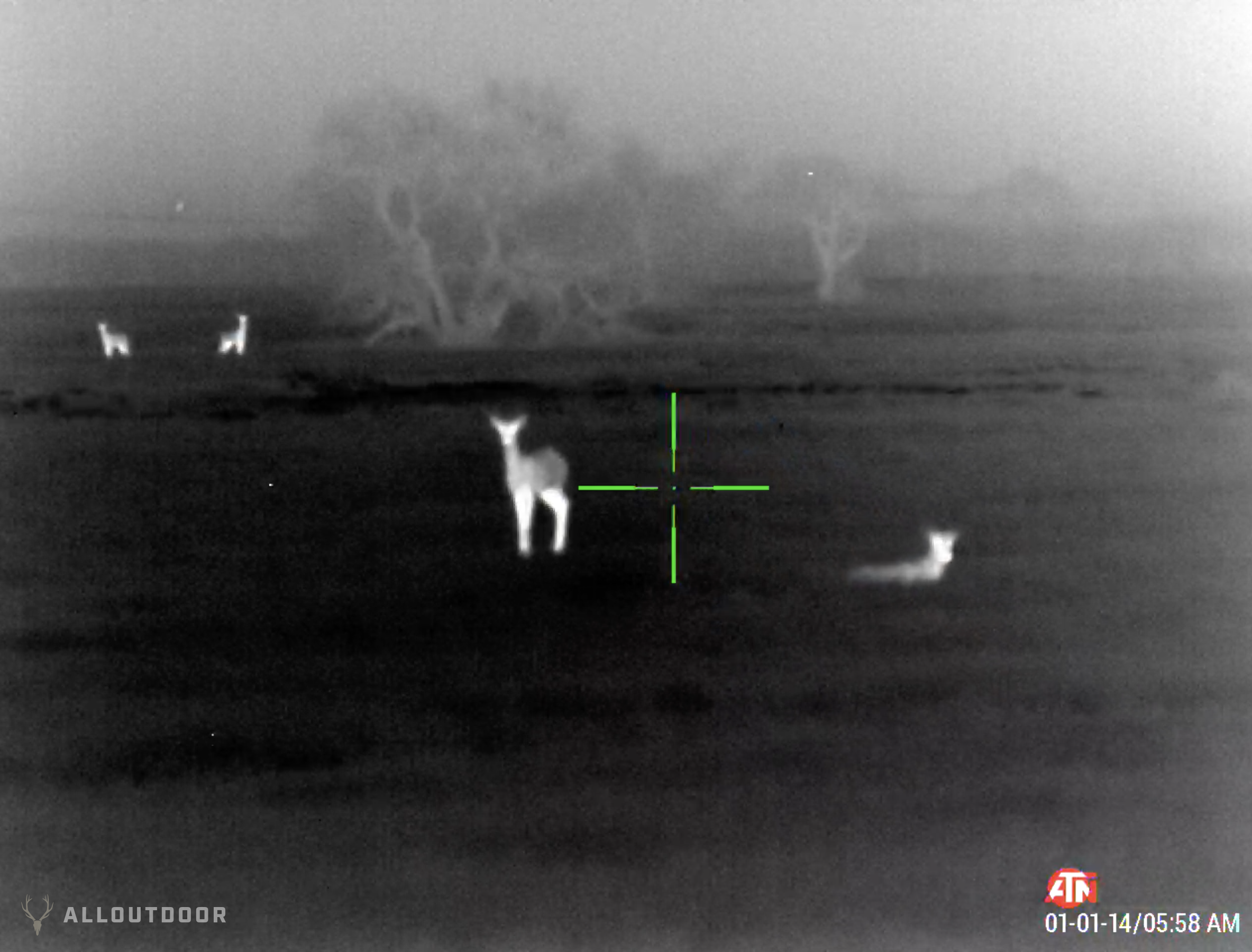
Almost two years ago I reviewed the ATN ThOR4 for The Firearm Blog. The ThOR4 was ok, but not amazing to me. I had high expectations and never used it in a practical scenario like hunting. Sure I looked at animals and people far away and comparing it to my experiences with other thermal systems or day optics.
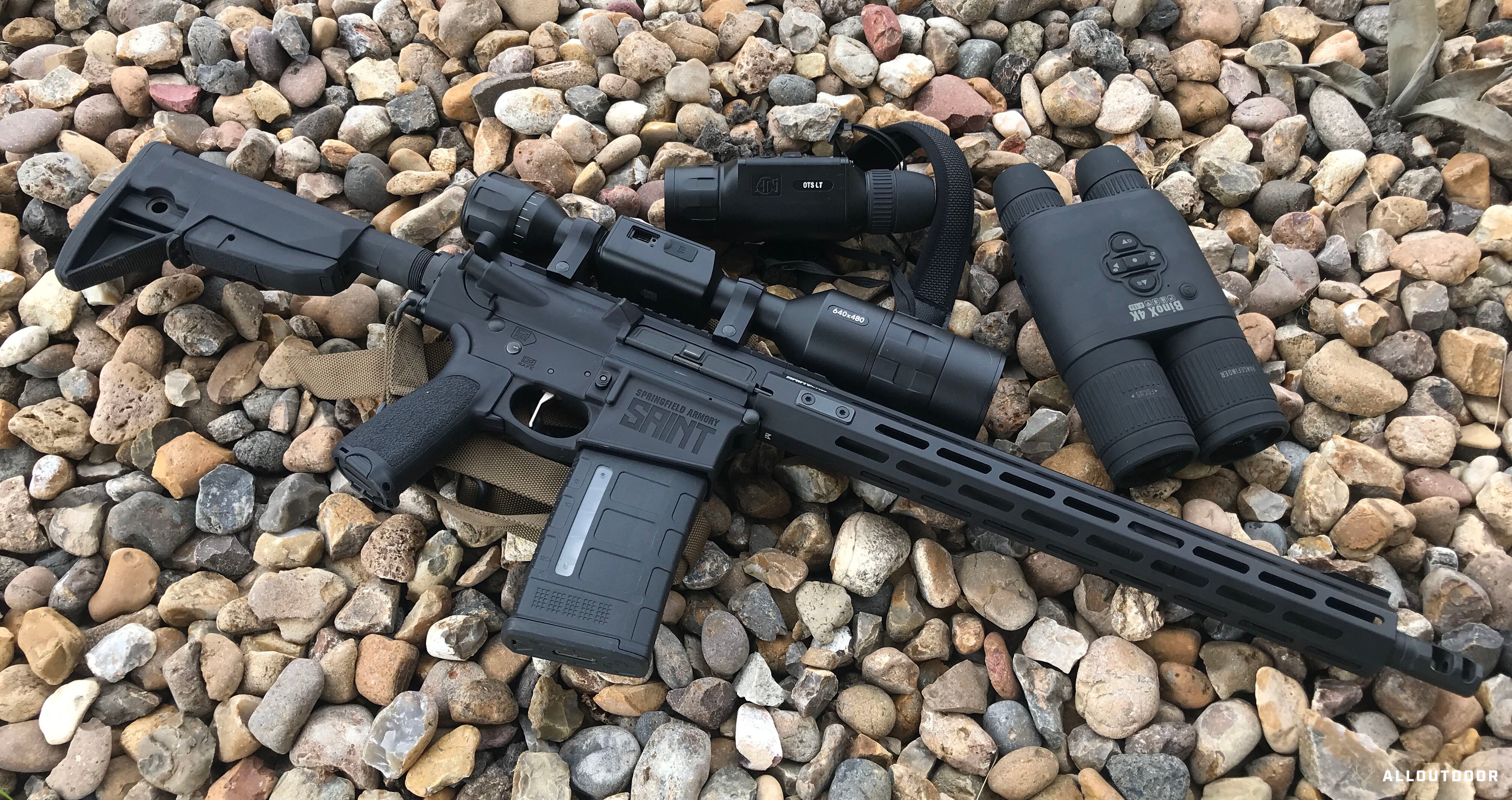
On this ATN thermal hunt I gained a greater appreciation for the 640×480 4-40x. The ThOR4 was able to identify animals at further distances than I could see with my personal night vision and thermal clip on. Our hunting guide used an ATN OTS LT and that had a bit more range than my AGM Micro TM384 thermal handheld. While the AGM has a better looking image, what mattered the most was being able to identify a pig or coyote much sooner and further away. That way we don’t waste our time chasing after every thing that glows hot in our thermal devices.
Our hunting guide, Cody, would drive us around the 120k acre land looking for hogs and coyotes. Adam rode shotgun and pointed his Saint Victor, unloaded of course, out the window to scan for potential game.
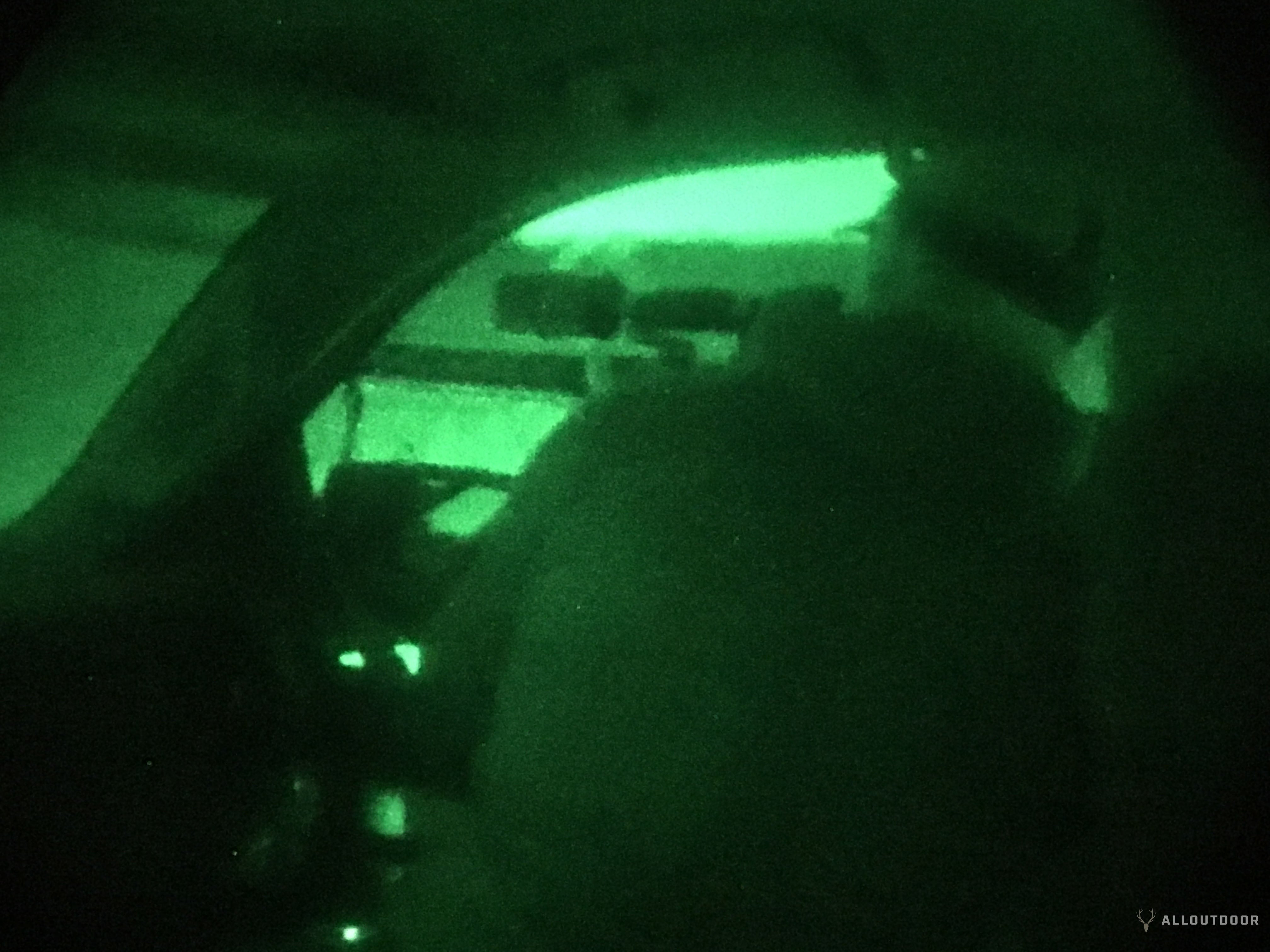
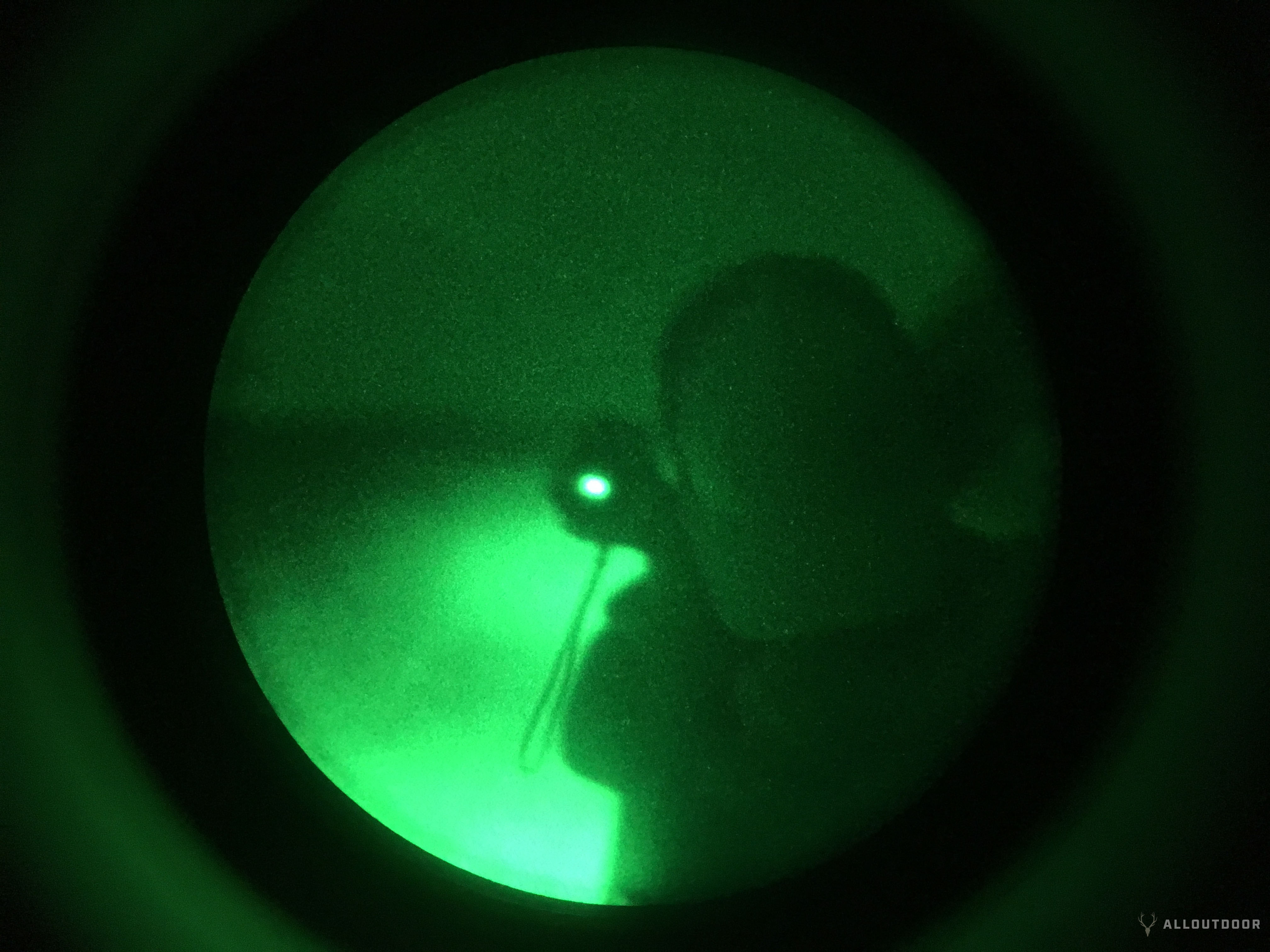
I sat in the rear passenger driver side seat. On occasion I would stick my Saint Victor rifle with ThOR4 out to see further and help ID a potential target I picked up in my thermal fusion night vision goggles.
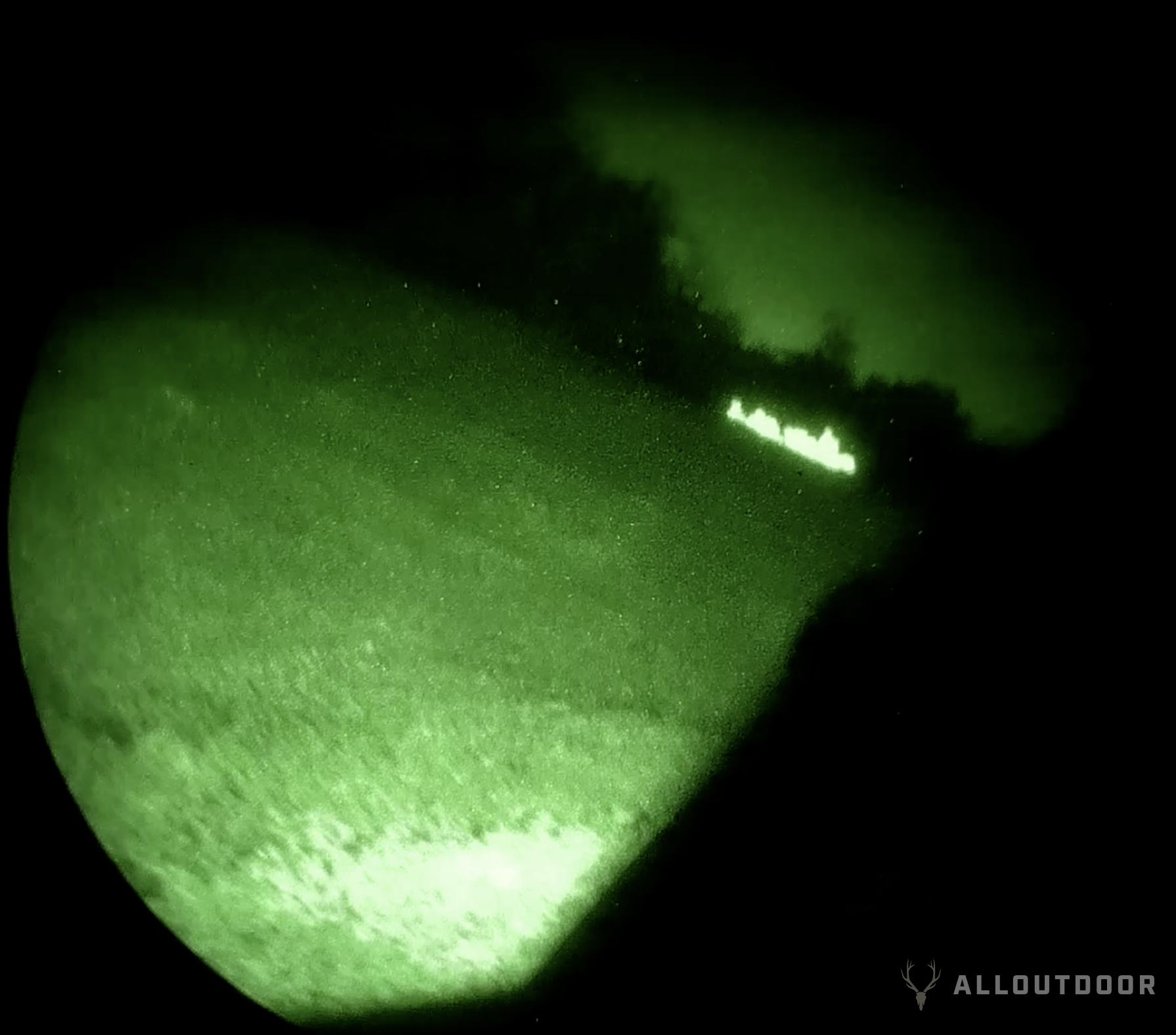
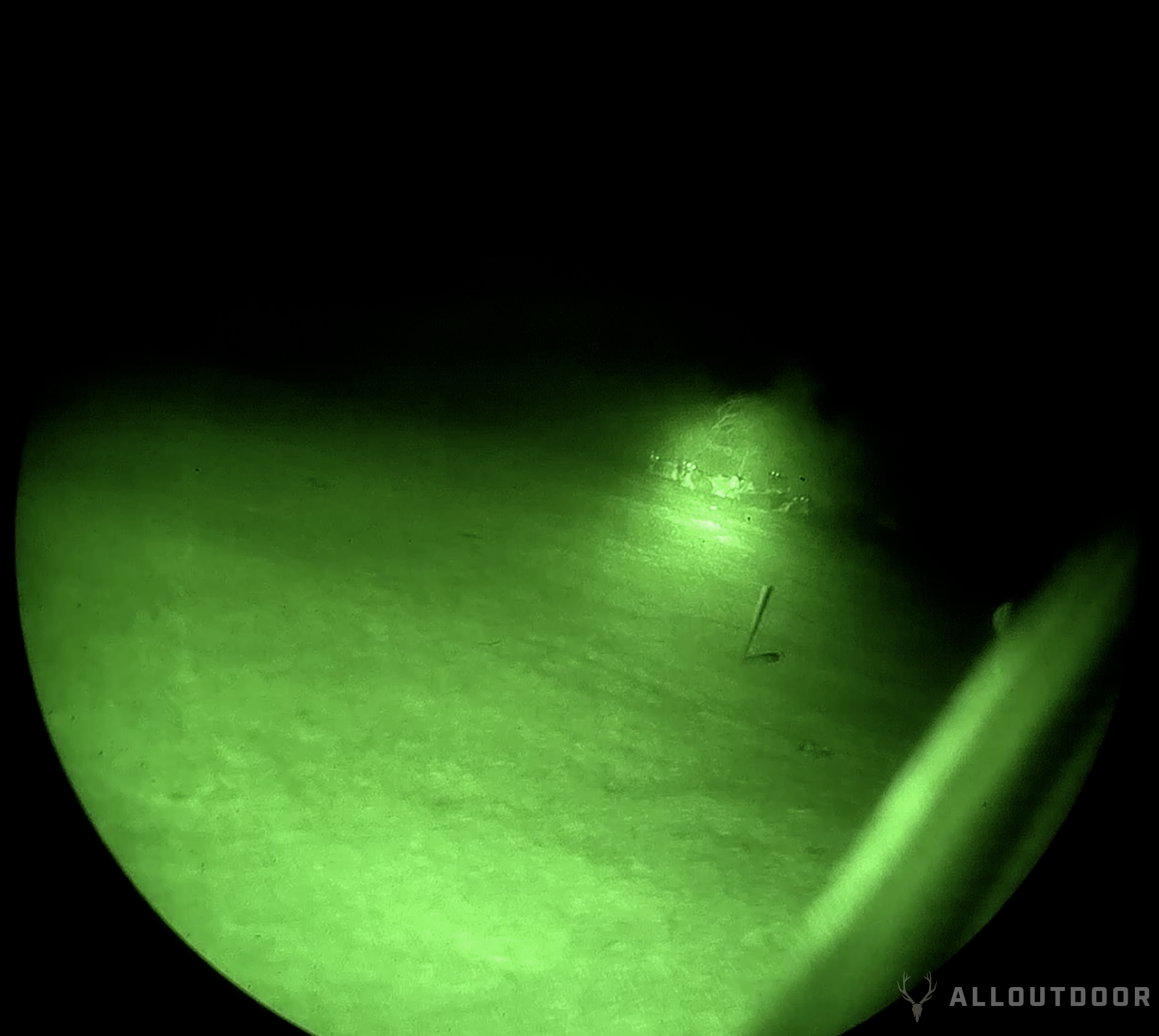
Trying to identify an animal down in South Texas was harder than I expected. Thankfully the ATN ThOR4 worked well for this. It starts at a natural 4x magnification so it is able to resolve and show us animals further than our handheld thermal devices could show for positive ID.
The morning before our first ATN thermal night hunt, we went out to the range to zero the ATN ThOR4. See the green circle below? Inside there is a white dot. That was my point of impact glowing under the ThOR4 image. The bullet was so hot that it left some heat behind while punching through the target and wooden backstop.
After we zeroed we went to the shooting tower and confirmed our zero at a 200 yard steel target.
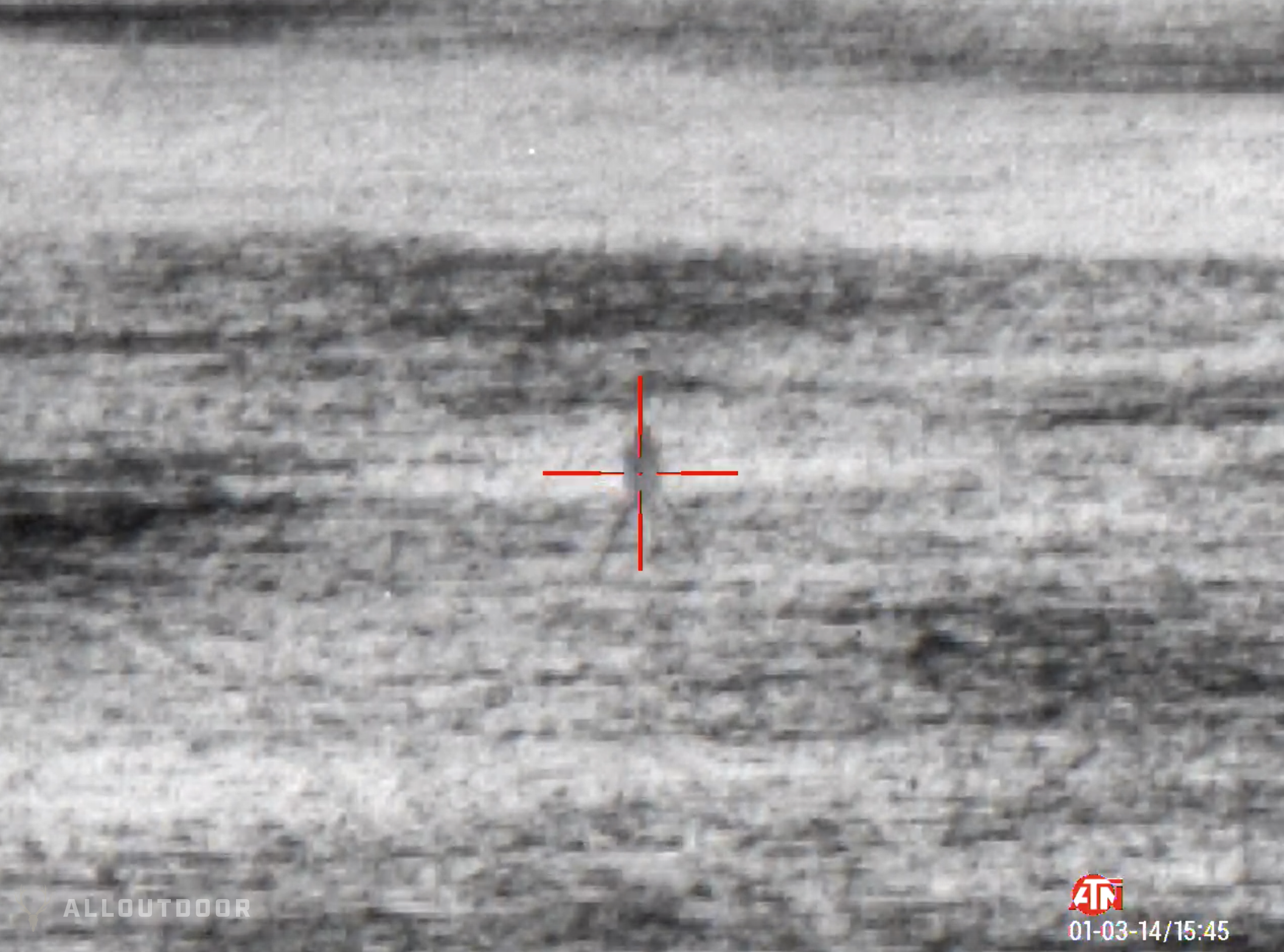
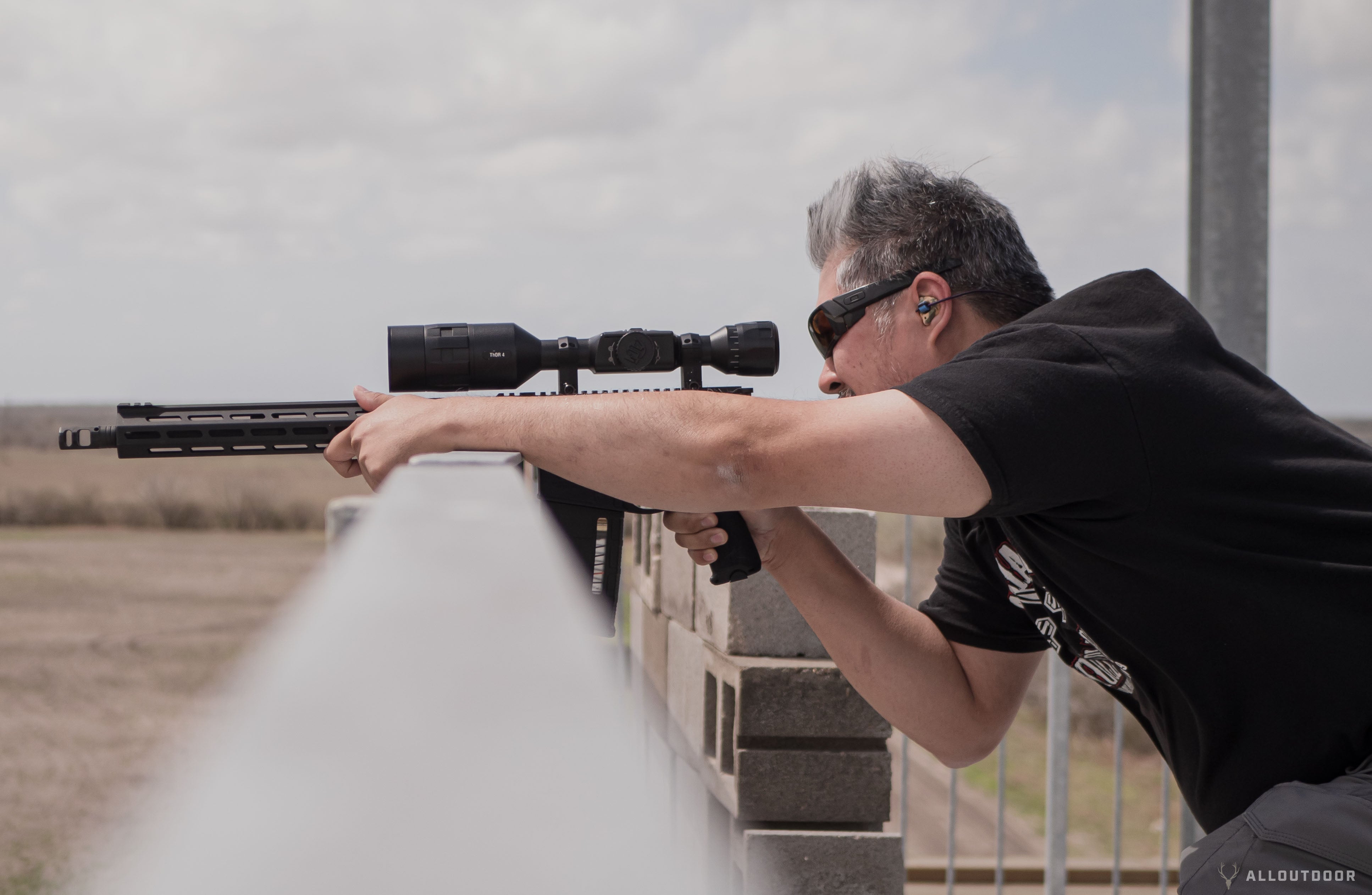
We managed to get 5 pigs although there were a few that I am pretty sure ran off just to die into the brush, but were too far deep for us to recover.
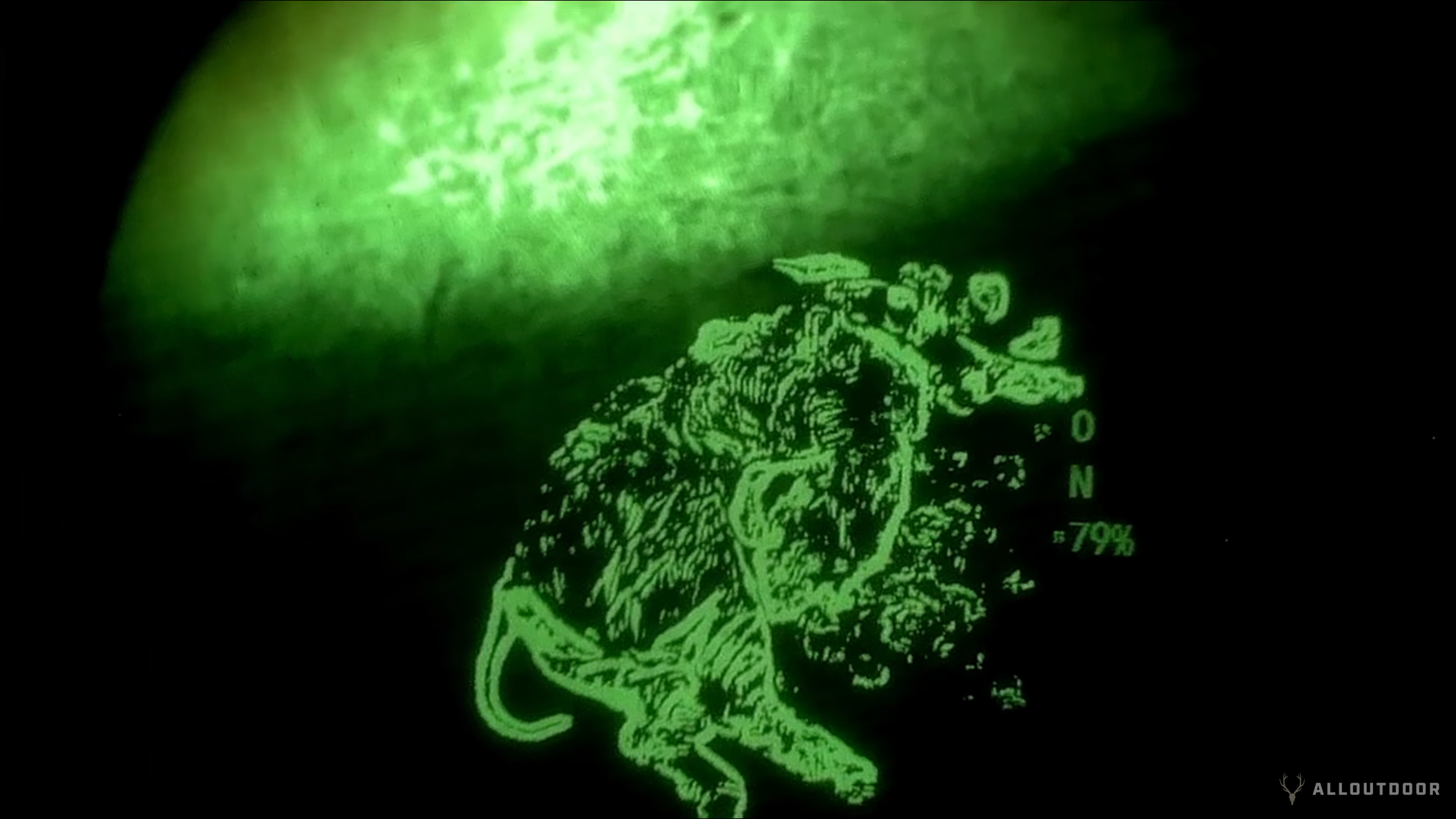
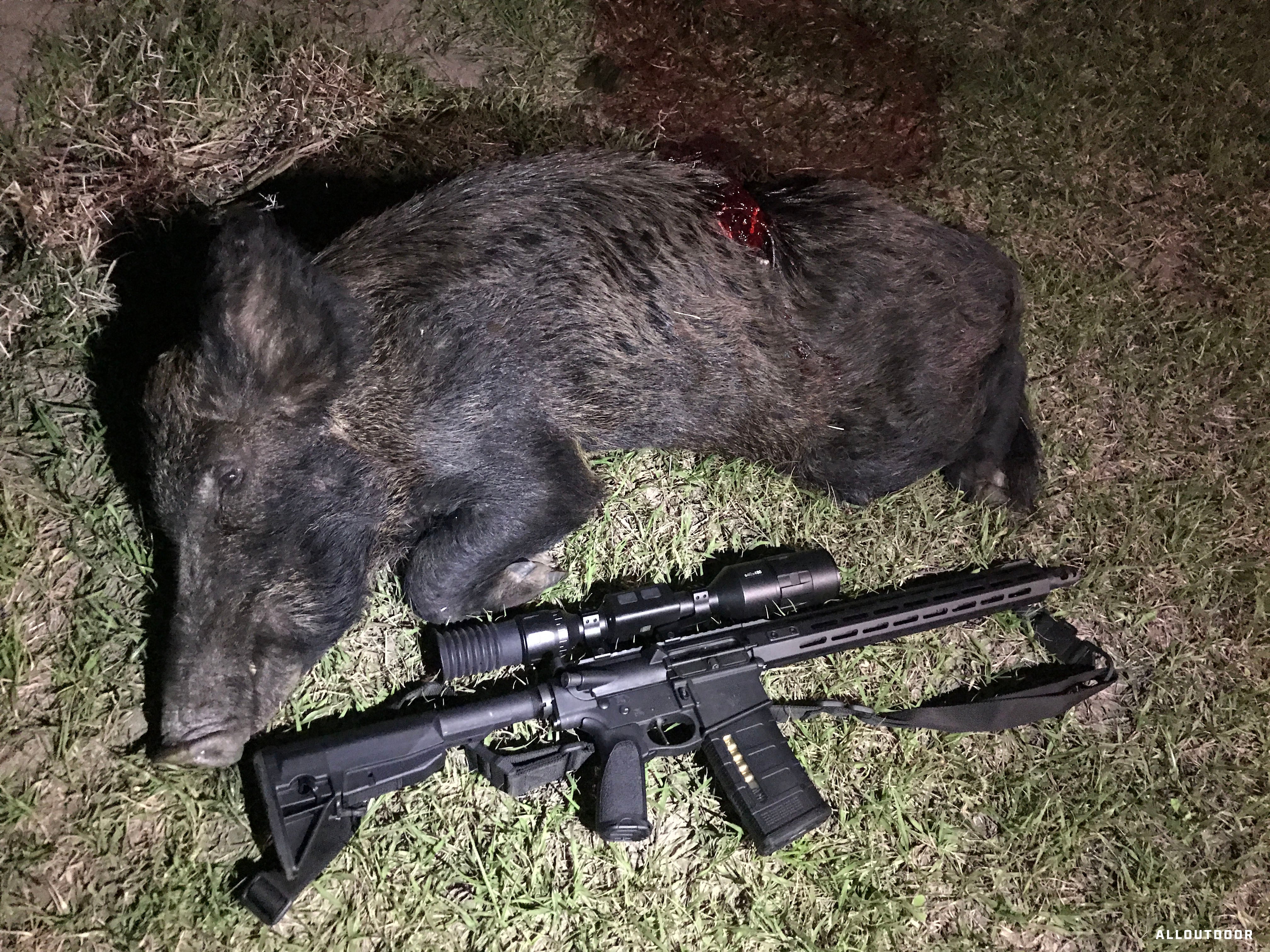
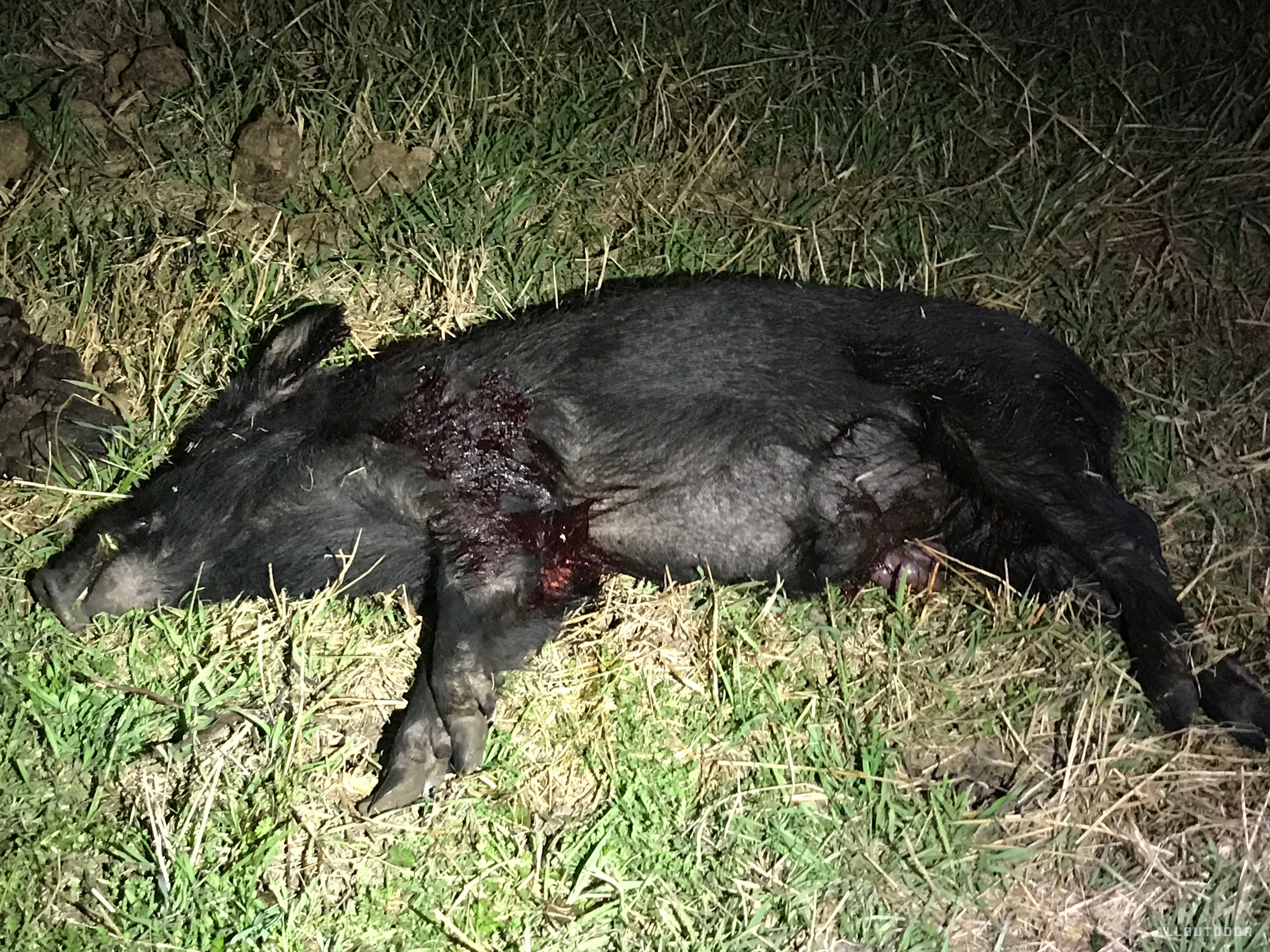


ATN Thermal Hunt Final Thoughts
The ThOR4 worked better than I had anticipated. When used practically in a hunt it was more than capable. I love that it can record video and audio so we have proof and a little video souvenir of our hunt.
There were some minor issues. We thought we had charged up Adam’s ThOR4, but we didn’t push the USB C cable in all the way so he started the night second night with only 1/4 battery life. The ThOR4 worked the whole night, but it was unable to record. We should have hooked it up to a USB power bank, but we were so focused on the hunt looking for game we did not think about it. Another trick we did not capitalize on is using the ATN Obsidian app. When you pair your smartphone to the ThOR4, you can live view what the scope sees. This would have made it much more comfortable looking for game while riding in the truck. Adam would often have to contort his body to manipulate the Saint Victor rifle and force his body to get behind the ThOR4 just so he can look through it.
For some reason my ThOR4 froze part way on the first night so I was unable to record or even turn off the ATN thermal scope. Fortunately the scope continued to work as an aiming device and showed me a thermal image. I was just unable to zoom in, record or turn it off. So I let the battery die and charged it up the next morning. Later I learned how to force a hard reset.
The OTS LT worked well for our hunting guide, but sadly it does not record so I do not have any examples of what the thermal image from it looks like. Our guide would use it to help spot for potential game. He would stick his head out the window while cruising with the lights off on his truck or just the parking lights. For those not familiar with thermal devices, while they can see heat, glass is a thermal barrier. Thermal devices cannot see through glass. Having night vision goggles, I was able to help guide him to steer while he searched for game. My night vision goggles were great for walking around in the dark, but not as good as thermal for spotting potential game. There was no moon and hardly any ambient light so it was really dark even with night vision. My thermal clip on helped to detect animals, but they were too far away for my Jerry-C to ID them. I would then have to resort to using the ATN thermal ThOR4 to check if I was looking at a pig or a cow.
For more information go to ATN’s website.
